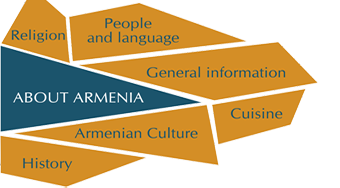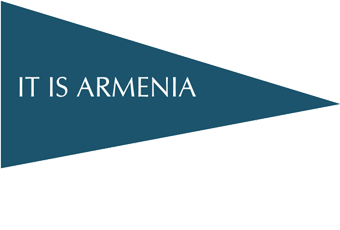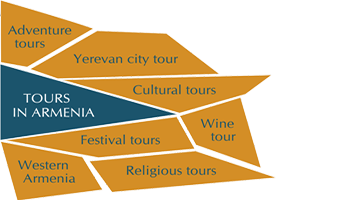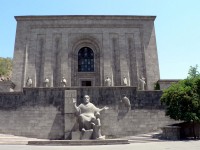Matenadaran (Institute of Ancient Manuscripts)
Armenia was one of the centers of rewriting of ancient manuscripts in the world. Armenians are the only nation in the world, which had the god of writing and knowledge, and the defender of science in their mythology, in the face of Tir. The current Armenian writing system amounted Mesrop Mashtots on the basis of the ancient Armenian scripts in 405. It has been for already 1600 and more years that the Armenian people have published hundreds of thousands of books and magazines devoted to the history, art, science... All the ancient Armenian temples were centers of rewriting of ancient manuscripts. Even in Soviet times, though Armenia was the smallest of the republics of the Soviet Union, Armenian was the very second language that the books were published after the Russian language. Unfortunately, the continual enemy attacks and especially the Armenian genocide of 1915 destroyed the major part of the literary heritage passed over by the Armenian people. And the remaining pieces were gradually gathered in Yerevan's Matenadaran, which, nowadays, is considered to be one of the largest repositories of ancient manuscripts in the world. The Yerevan Matenadaran after Mesrop Mashtots is research center and repository of ancient manuscripts and documents. Matenadaran was founded in 1921. Nowadays, only 31 thousands of ancient Armenian manuscripts have preserved in the world, 14 thousands of which are kept in Yerevan Matenadaran. In general, about 22 thousands manuscripts in different languages: Arabic, Turkish, Persian, Russian, Chinese are stored in Matenadaran today... And more than 100 thousands documents in the archives are kept there. The present building of Matenadaran was built in 1957, by the architect Mark Grigoryan. The building has the characteristics of modern Armenian architecture from the outside and from the inside; it mainly has the solutions typical to the medieval architecture. The total usable area of the building is more than 15 thousand sq.m. There are monuments of basalt to the great personalities of the Armenian science and culture, to Movses Khorenatsi, Anania Shirakatsi, Mkhitar Gosh, Toros Roslin, Frik and Grigor Tatevatsi in front of the partitions of the niches of the main facade. And there are combined monuments to Mesrop Mashtots and Koryun in a small square, located below.

















